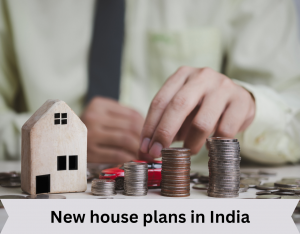ForumIAS announcing GS Foundation Program for UPSC CSE 2025-26 from 19 April. Click Here for more information.
ForumIAS Answer Writing Focus Group (AWFG) for Mains 2024 commencing from 24th June 2024. The Entrance Test for the program will be held on 28th April 2024 at 9 AM. To know more about the program visit: https://forumias.com/blog/awfg2024
Source: The post new housing plan in India has been created, based on the article “Beyond shelter, dweller needs within the four walls” published in “The Hindu” on 22nd February 2024.
UPSC Syllabus Topic: GS Paper 3- Economy- infrastructure
News: The article discusses India’s plan to build more houses under the Pradhan Mantri Awas Yojana. It focuses on using modern technologies like Mivan for faster, eco-friendly construction. However, it raises concerns about increased energy use due to poor insulation in these houses. New house plans in India
What is the new housing plan in India?
India’s Finance Minister announced a plan to build two crore more houses in the next five years under the Pradhan Mantri Awas Yojana Gramin (PMAY-G) and introduced a new housing scheme for the middle class.
For information on Middle class housing scheme read here
This plan continues the work of PMAY, which has already helped build nearly three crore rural and 80 lakh urban affordable houses since 2015.
The plan is a key component of the broader ‘Housing for All’ initiative, aiming to provide inclusive housing solutions across various income groups in India.
For information on “Housing for all” read here
How can sustainable housing be achieved in India?
Modern Technology:
Modern technology plays a crucial role in sustainable housing in India.
Techniques like Mivan, which uses recyclable aluminium formwork, are revolutionizing construction. This method not only speeds up the building process but also offers a more environmentally friendly approach by reducing waste.
Also, the adoption of Light House Projects (LHPs) under the Global Housing Technology Challenge is effective. These projects focus on resilient and affordable housing, using innovative technologies to improve both construction quality and efficiency, aligning with India’s broader housing goals.
Thermal Comfort:
Thermal comfort is crucial. Passive design strategies, guided by Eco Niwas Samhita, tailor buildings to climate zones. The Smart Ghar III project in Rajkot exemplifies this, ensuring comfort while minimizing energy use.
What are the challenges in implementing sustainable housing designs?
Multi-Stakeholder Complexity: Implementing sustainable housing involves architects, engineers, contractors, and material suppliers, each with different priorities and awareness levels.
Homeowner Awareness: There’s a lack of understanding among homeowners about the long-term benefits of energy-efficient designs. Passive designs offer reduced energy bills and improved comfort, but these advantages aren’t immediately obvious to them.
Challenges in Adoption of Codes: While there are guidelines like Eco Niwas Samhita for passive design, translating these into practice is difficult due to diverse stakeholder interests.
Read More UPSC Topics-
Way forward
The way forward involves obligatory implementation of building codes for thermal comfort, like the Eco Niwas Samhita, across all housing projects. Additionally, fostering collaboration and raising awareness among all stakeholders, from architects to homeowners, about the benefits of sustainable designs is essential. This approach will help align housing development with environmental and climate goals.
Question for practice:
Examine how India’s housing initiatives, such as the Pradhan Mantri Awas Yojana and the use of modern technologies like Mivan, are addressing the challenges of sustainability and energy efficiency in housing construction.





